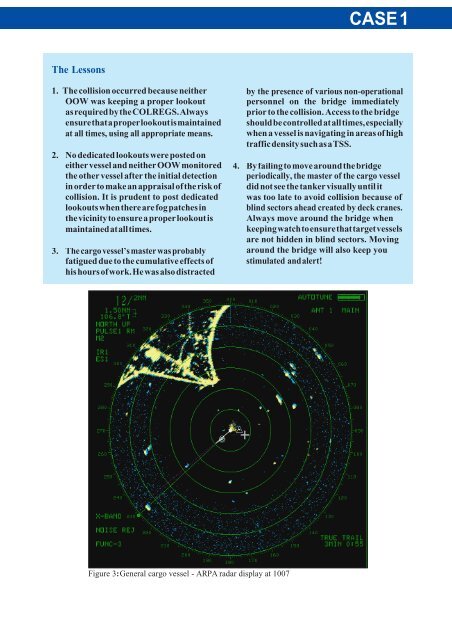Create successful ePaper yourself
Turn your PDF publications into a flip-book with our unique Google optimized e-Paper software.
CASE 1<br />
1. The collision occurred because neither<br />
OOW was keeping a proper lookout<br />
as required by the COLREGS. Always<br />
ensure that a proper lookout is maintained<br />
2. No dedicated lookouts were posted on<br />
either vessel and neither OOW monitored<br />
the other vessel after the initial detection<br />
in order to make an appraisal of the risk of<br />
collision. It is prudent to post dedicated<br />
lookouts when there are fog patches in<br />
the vicinity to ensure a proper lookout is<br />
maintained at all times.<br />
3.<br />
fatigued due to the cumulative effects of<br />
his hours of work. He was also distracted<br />
4.<br />
personnel on the bridge immediately<br />
prior to the collision. Access to the bridge<br />
should be controlled at all times, especially<br />
when a vessel is navigating in areas of high<br />
traffic density such as a TSS.<br />
By failing to move around the bridge<br />
did not see the tanker visually until it<br />
was too late to avoid collision because of<br />
Always move around the bridge when<br />
keeping watch to ensure that target vessels<br />
are not hidden in blind sectors. Moving<br />
around the bridge will also keep you<br />
Figure 3: General cargo vessel - ARPA radar display at 1007


